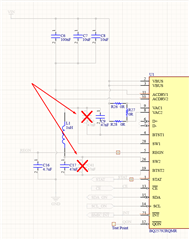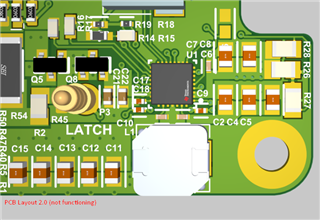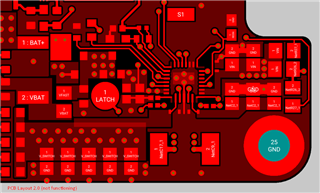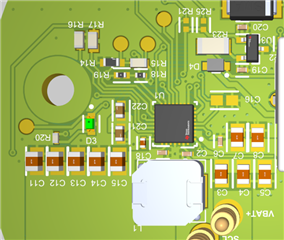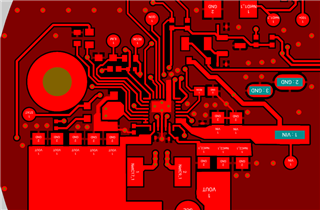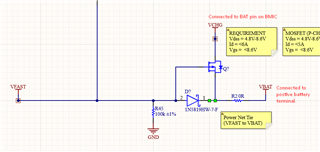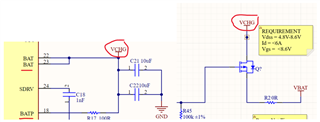Tool/software:
Hi, I am using a BQ25792, I am somehow damaging this IC however unsure what my be causing it because I haven't noticed a pattern yet.
Once the IC is damaged, I can see on an Oscilloscope the output (VSYS) operates fine for about 10 seconds with a small load (100mA) however, slowly falls from its programmed regulated output voltage (~7.4V) across a few seconds after this point, until it reaches around 3V, ripples and then completely dies and there is no more output.
After this, if I turn off VBAT wait a couple of seconds and turn it back on, the above occurs again instantly. If I wait a few minutes, then it'll operate fine for 10 seconds again and then die. It's happened on 3 IC's now...
I have used this IC on a previous project and never faced this issue and have carried across the same schematic so I can only assume that I am damaging it either by my testing approach or something upstream. As it works for an entire day of testing until I must be doing something and breaking it.
The only thing I can imagine is happening is I am supplying a voltage upstream on the VOUT rail when testing (no input on VBUS or VBAT), which is going into flowing back into IC and damaging it (shown by the arrows in my schematic below). Could the damage be caused by this and should I have a diode on VSYS to prevent this?
This is my schematic:
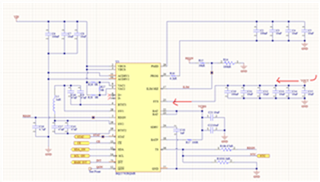
This is a close up of reference CH2 which is VSYS, once a load is applied after 10 seconds it drops to this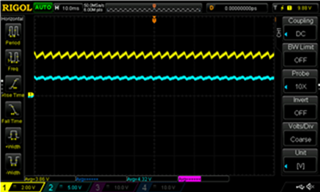
This is CH2, first outputting 7.4V from VSYS, with a load of 150mA for a few seconds, then it drops and crashes, then when the load is released it bounces back to a stable 7.4V output. When I replace the IC there is no longer this issue, so I know it’s not the load.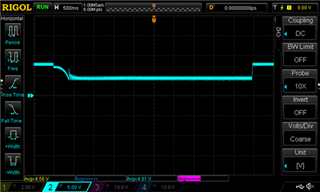
Thanks in advance for any assistance!


